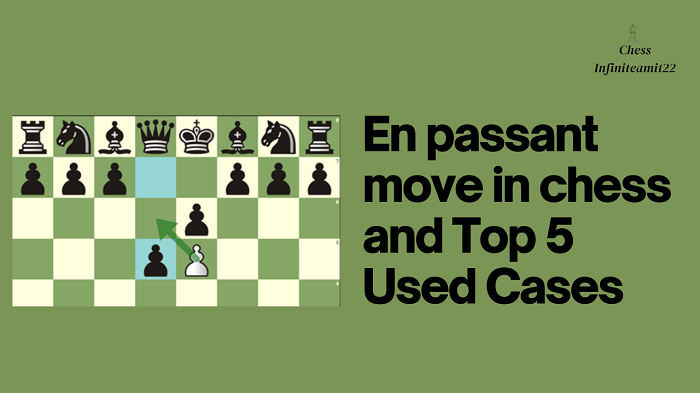En passant move in chess and Top 5 Used Cases
In chess, the en passant move is a unique and strategic capture. When a pawn advances two squares from its starting position and lands beside an opponent’s pawn, the opposing pawn can capture it “en passant” on the very next move. This French term translates to “in passing.” The capturing pawn moves diagonally into the square the advanced pawn passed, as if it had moved only one square forward. En passant prevents players from avoiding capture by advancing two squares, adding depth and tactical nuance to the game as players navigate the intricacies of pawn interactions on the chessboard.
While the en passant move in chess is a relatively rare occurrence, it has played a crucial role in some notable games throughout history. Here are five cases where the en passant move had a significant impact
Top 5 used cases of en passant move in chess history
Kasparov vs. Karpov (1985, World Chess Championship):
In the 24th game of their epic match, Garry Kasparov and Anatoly Karpov engaged in a complex struggle. Karpov played an en passant move, capturing Kasparov’s pawn to gain a positional advantage. This move showcased the subtleties of en passant in high-stakes competition.
Fischer vs. Spassky (1972, World Chess Championship):
The famous “Match of the Century” between Bobby Fischer and Boris Spassky featured an en passant move in Game 6. Fischer executed this tactical maneuver, illustrating its strategic importance even at the highest level of chess.
Carlsen vs. Anand (2014, World Chess Championship):
Magnus Carlsen, known for his dynamic play, utilized the en passant move in a critical moment against Viswanathan Anand during their World Championship match. The move contributed to Carlsen’s victory and demonstrated the versatility of this pawn capture tactic.
Capablanca vs. Lasker (1921, World Chess Championship):
In a game from their World Championship match, José Capablanca, the third World Champion, showcased his understanding of pawn dynamics. Capablanca executed an en passant move, contributing to his victory and highlighting the subtleties of pawn structure.
Botvinnik vs. Smyslov (1954, World Chess Championship):
Mikhail Botvinnik, a renowned Soviet grandmaster, employed the en passant move in a critical game against Vasily Smyslov during their World Championship match. Botvinnik’s understanding of pawn play and tactics played a pivotal role in securing his victory.
While en passant moves might not be as frequent as other chess tactics, these historical cases demonstrate their strategic importance in creating imbalances, seizing opportunities, and influencing the outcome of high-profile games. The en passant capture remains a valuable weapon in a player’s arsenal, providing a subtle yet powerful means to gain an edge over the opponent.
- Teenager Defeats Magnus Carlsen in 3 Chess Games!
- Navigating the Chessboard: Top 10 Chess Websites for Enthusiasts
- Lightning Strikes: The Top 10 Fastest Checkmates
- Mastering the Game: 7 Fundamental Rules to Play Chess Like a Pro
- Understanding Elo Points in Chess: A Guide to Improvement






[…] En passant move in chess and Top 5 Used Cases […]